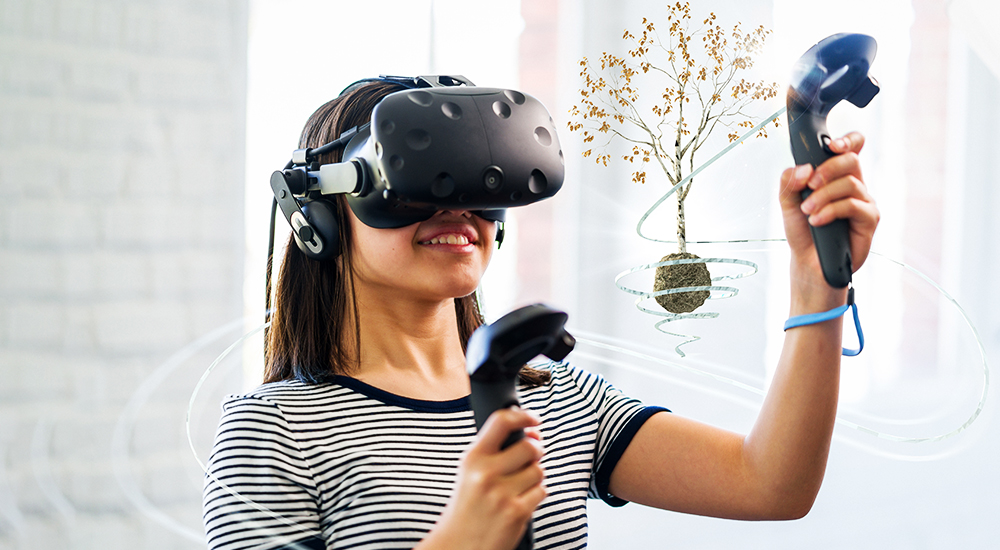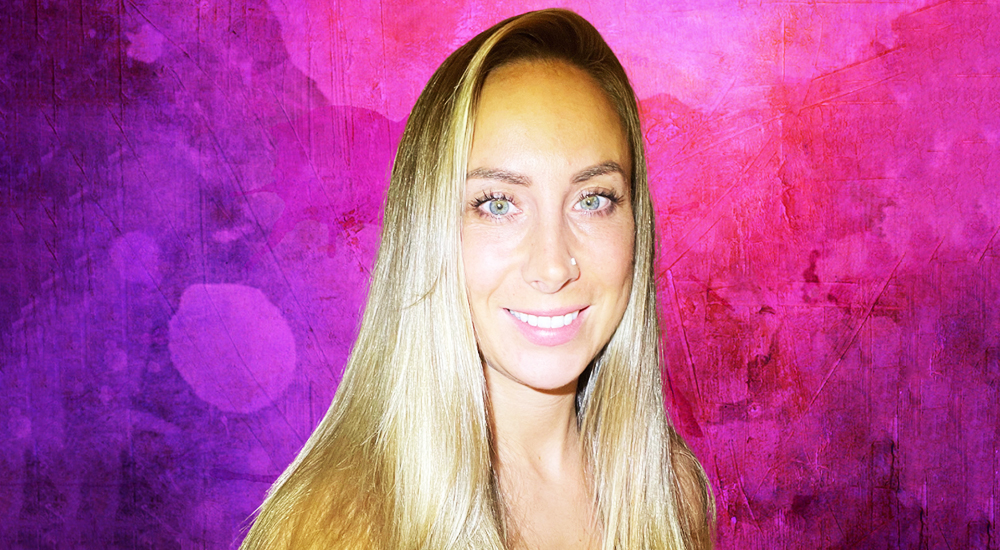Using immersive environments to prepare students of GEMS Metropole School

More and more young people are using immersive technologies for entertainment and recreation purposes and to engage with peers. For educators, it is increasingly important to ensure students are educated about how immersive technologies work and how they are developed using computer science.
More important, however, is that students realise these technologies can be employed for so much more than entertainment. Virtual reality and augmented reality are already at the forefront of almost every industry, and educators must prepare young people to be future-ready learners.
The question is, how do schools immerse students in immersive technology? The answer is simple: get students to build the technologies, according to Sophie Hunter, Digital Innovation Coach at GEMS Metropole School located at Dubai Motor City in Dubai.
Innovative approach
The students at GEMS Metropole School use the platform CoSpaces Edu to build their own 3D creations, animate them with code and explore them in virtual and augmented reality.
CoSpaces Edu lets kids build their own 3D creations, animate them with code and explore them in virtual or augmented reality. Creating with CoSpaces Edu develops digital literacy and learning skills such as collaboration and coding, which prepare kids for their future while empowering them to become creators.
Using the CoSpaces Edu platform under the guidance of teachers, students in year 4 have developed their own parkour-style platform game by constructing a variety of building blocks, manipulating them and precisely placing them to build various platforms for a player to navigate. Some of the blocks are unique and allow the creator to add obstacles that players need to overcome.
Wikipedia explains parkour as an athletic training discipline in which practitioners attempt to get from point A to point B in the most fluid way possible, without equipment and in the fastest and most efficient way possible. With roots in military obstacle course training and martial arts, parkour includes running, climbing, swinging, vaulting, jumping, plyometrics, rolling, and quadrupedal movement—whatever is suitable for a given situation.
For the purpose of coding, this involves seeing one’s environment in a new way, and envisioning the potential for navigating it by movement around, across, through, over and under its features.
Once the course is created, the students use complex coding to programme objects to run in the same way as any other video game. Reaching this point requires deep problem solving and meta thinking skills to arrange the coding correctly and debug errors.
“Next comes the fun part,” explains Sophie. “We have teamed up with ClassVR Technologies, a virtual reality headset, so students can send their parkour game directly to the device and play their game.”
“You can visibly see the excitement in students as their creations materialise in a full 360-degree virtual environment making their design a reality, quite literally,” she says.
ClassVR is a product from Avantis Systems, an educational technology company, with a history of developing solutions for the education sector. ClassVR headsets provide a safe and secure way for students to explore virtual reality and augmented reality in the classroom with the teacher keeping control over each device.
From a comfortable virtual reality experience using the adjustable head straps to the intuitive and simple to use interface and controls, ClassVR headsets have been designed specifically for students of all ages.
The ClassVR Portal ensures teachers can confidently manage students and add value to lessons when using virtual reality and augmented reality in lessons. Teachers are always in control and the real-time class view provides visibility of what and where their students are exploring in the headsets.


The next level
Immersive, technology-led lessons such as this are not restricted to computer lessons as a specialist subject in the primary phase or a focus in the secondary subject. Sophie is working to make sure these technologies at school are integrated in the curriculum and planned for effectively.
The technology can be adapted for all subjects. For example, the ClassVR headsets can be loaded with rainforest videos to allow desert-dwelling students to experience what it is like to be in a rainforest. This gives an understanding of geography, biodiversity and climate.
Another immersive technology being used at GEMS Metropole School involves Merge Cubes, which involves a physical cube with a special graphic being scanned by a tablet to project a virtually augmented object.
The Merge Cube lets you hold digital 3D objects, enabling an entirely new way to learn and interact with the digital world. Students can explore a galaxy in the palm of their hand, hold fossils and ancient artifacts, explore a DNA molecule, investigate the Earth’s core, dissect a virtual frog, hold and share their own 3D creations.
The applications allow the school’s students to see a huge library of concepts in augmented reality, such as the life cycle of plants and animals – something they may never experience first-hand.
Physics, mathematics and engineering are also considerations when using these types of platforms. Using CoSpaces Edu, students can programme the trajectory of a rocket through space and then watch in virtual reality what happens. To do this, students create a 3D or 360-degree workspace using the platform, and the rocket is coded with a range of both Block and Python script.
Using the XYZ axes as well as movement and variable coding, they can plot a spaceship object’s course towards a planet, all built in 3D. Understanding errors in speed or distance means they need to analyse the code to get the correct trajectory to follow a path and move at the correct angle.
The medical field is another that has been revolutionised by virtual reality and augmented reality when it comes to training students, providing something as close to real-world experience as possible, and measuring competence before operating. The technologies are creating a powerful paradigm shift for medical practitioners.
virtual reality technology is already being used in many industries. Architects can be on the same page as their clients, which resolves problems before they arise. Where clients could previously only view 2D versions of buildings in the earlier blueprints, they can now visualise end-to-end growth and have an exploratory view of their buildings in real time.
Tomorrow’s smart workers
“Our goal is to ultimately have seamless integration of immersive technologies across the school,” says Sophie. “It is really important to set the foundations through informative and progressive computer lessons, which are then built on and further applied in other lessons and classes.”
The process, from design, to coding, to final product, demonstrates to students each stage of virtual reality and content creation, as well as how using this technology can enhance experiences and learning. By using these skills, students can explore much more than just game development.
More than being an immersive and gamified approach to education, the tools students are applying in the modern classroom are also aligned to those that educators anticipate the students will need in the workforce.
Embedding immersive technologies in the curriculum and pedagogy of the classroom at every stage of learning empowers students to be future ready, skilled and knowledgeable. It also allows them to gain a deeper understanding of the world around them. Immersive technologies should therefore not be viewed as an add on to learning; rather an essential tool that needs to be harnessed.
“We want to prepare our students effectively, as many of them could be using this technology in their future careers,” reflects Sophie. Having virtual reality and augmented reality experience strengthens their job prospects and gives them an edge in the ever-competitive job market.
Key takeaways
- Virtual reality and augmented reality are at the forefront of every industry, educators must prepare young people to be future-ready learners.
- Students must realise these technologies can be employed for so much more than entertainment.
- The students use the platform CoSpaces Edu to build their own 3D creations, animate them with code and explore them.
- Once the course is created, the students use complex coding to programme objects to run in the same way as any other video game.
- The process, from design, to coding, to final product, demonstrates to students each stage of virtual reality and content creation.
- By using these skills, students can explore much more than just game development.
- The students use complex coding to programme objects to run in the same way as any other video game.
- Reaching this point requires deep problem solving and meta thinking skills to arrange the coding correctly and debug errors.
- The tools students are applying in the modern classroom are also aligned to those that educators anticipate the students will need in the workforce.
- It is important to ensure students are educated about how immersive technologies work and how they are developed using computer science.
- Immersive technologies should not be viewed as an add on to learning, rather an essential tool that needs to be harnessed.
Embedding immersive technologies in the curriculum and pedagogy of the classroom at every stage of learning empowers students to be future ready.





